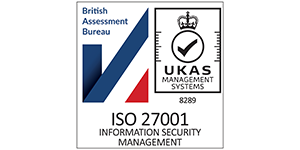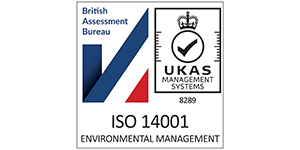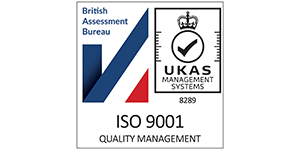This article is part of our comprehensive guide to Martyn's Law. For an overview of the legislation, who it applies to, tier requirements, and how AV technology can support compliance, see our complete guide to Martyn's Law.
Martyn's Law (the Terrorism (Protection of Premises) Act 2025) received Royal Assent on April 3 2025 (homeofficemedia.blog.gov.uk). The Act introduces legal obligations for qualifying venues and events to assess terrorism risks and put in place protective measures. While there is an extended lead‑in period, organisations should start planning now to avoid last‑minute scrambling.
Implementation timeline
Royal Assent – April 3 2025. Martyn's Law became Law on this date (homeofficemedia.blog.gov.uk).
24‑month implementation period. Both the Home Office factsheet and the Department for Education guidance confirm that there will be at least a 24‑month period before the Act is enforced (homeofficemedia.blog.gov.uk). During this time, the Security Industry Authority (SIA) will establish its regulatory function and publish statutory guidance (homeofficemedia.blog.gov.uk).
No legal requirement yet, but preparation is expected. Legal commentators note that there is no requirement to comply until the legislation comes into force. However, the government encourages responsible persons to begin planning, as the guidance will outline how to meet the new duties, and being ready early reduces risk (homeofficemedia.blog.gov.uk).
For a detailed breakdown of who falls under Martyn's Law scope, see our guide: Who Does Martyn's Law Apply To?.
Compliance checklist: steps to prepare now
The following checklist outlines practical steps to meet the requirements of Martyn's Law during the implementation period. It draws on advice for councils and venue operators from the National Association of Local Councils (NALC) and legal briefings.
1. Determine whether you're in scope
Identify all venues and events you operate or manage. Martyn's Law applies to public premises and events where 200 or more people may be present (homeofficemedia.blog.gov.uk). Premises expecting 200–799 people are standard‑tier venues, while those expecting 800+ people are enhanced-tier venues. Assess which of your spaces fall into these categories.
For a detailed comparison of standard and enhanced tier requirements, see our guide: Standard vs. Enhanced Tier: What's the Difference?.
2. Assign a responsible person
For every qualifying venue or event, nominate a responsible person, the individual or organisation that has control of the premises or event (homeofficemedia.blog.gov.uk). For enhanced‑tier premises, the responsible person must designate a senior individual to oversee compliance and document public protection procedures (bclplaw.com).
3. Carry out risk assessments
Conduct terrorism risk assessments tailored to each venue. This involves identifying potential vulnerabilities (entrances, crowd flow, escape routes) and evaluating the likelihood and impact of different attack types (nalc.gov.uk). For enhanced‑tier premises, risk assessments must be documented and provided to the regulator (bclplaw.com).
4. Develop emergency plans
Draft simple emergency response plans that outline evacuation routes, invacuation procedures, and communication methods. Standard‑tier premises must put in place appropriate public protection procedures, such as evacuation, invacuation, and lockdown plans (homeofficemedia.blog.gov.uk). Enhanced‑tier venues will need more detailed plans, including procedures for crowd management and information dissemination (bclplaw.com).
5. Provide security awareness training
Train staff, volunteers, and regular contractors to spot suspicious behaviour, respond to alerts, and execute emergency plans. NALC's advice emphasises offering security awareness training for staff and volunteers (nalc.gov.uk) to improve preparedness.
6. Engage with local authorities and emergency services
Liaise with local police, counter‑terrorism advisors and your local council to ensure plans align with regional preparedness strategies. NALC recommends working with local authorities and emergency services for guidance and support (nalc.gov.uk).
7. Consider physical and technological measures
For enhanced‑tier venues, be prepared to implement additional protective measures, such as CCTV, bag checks, and secure entry systems (bclplaw.com). Even standard‑tier venues may benefit from inexpensive improvements such as improved lighting, secure doors, and mass‑notification systems.
8. Document and record procedures
Maintain clear, accessible records of your risk assessments, training, emergency plans and any physical security measures. Enhanced‑tier venues must provide the SIA with documented plans and public protection procedures upon request.
9. Stay informed
Keep abreast of statutory guidance from the SIA and Home Office as it becomes available. Subscribe to ProtectUK alerts, read government publications and join industry forums to ensure you understand the latest requirements. NALC advises councils to stay informed and download templates for risk assessments (nalc.gov.uk).
10. Plan your timeline
Spread your preparation over the implementation period. For example:
**Months 1–6:** Identify venues, assign responsible persons, and conduct initial risk assessments.
**Months 7–12:** Draft emergency plans, begin staff training, liaise with authorities.
**Months 13–18:** Implement physical/technological measures where necessary and finalise documentation.
**Months 19–24:** Review and refine plans, refresh training and confirm compliance documentation is ready.
Next steps
Although Martyn's Law will not be enforced until at least 2027, taking proactive steps now ensures you're compliant when the regulator starts inspections. By identifying in‑scope venues, conducting risk assessments, training staff, developing emergency plans, and engaging with local authorities, you build resilience and protect your community.
For more comprehensive information about Martyn's Law, including who it applies to, tier requirements, special considerations for education settings, and how AV technology can support compliance, see our complete guide to Martyn's Law. Meanwhile, Strive AV's Martyn's Law Compliance service offers consultation, risk‑assessment support and technology solutions to help you meet these obligations.












